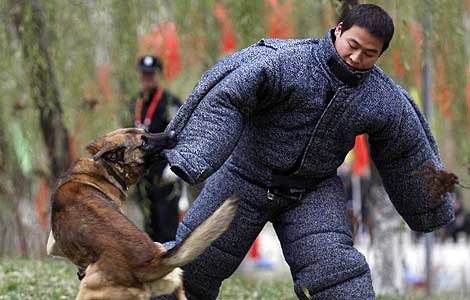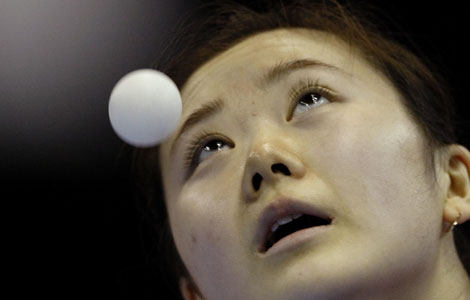US beefs up Asia-Pacific army bases
Updated: 2011-11-30 08:13
By Ma Liyao (China Daily)
|
|||||||||
BEIJING - The US military presence in the Asia-Pacific region is currently experiencing major changes, but analysts said this adjustment in deployment was more a case of strengthening Washington's influence in the area than specifically targeting China.
"The question of how China should react to US military redeployment is raised with an underlying assumption that the countries are adversaries, which is debatable and reveals a certain lack of confidence," said Xu Hui, a professor at the National Defense University.
During his visit to Australia this month, US President Barack Obama announced a new security agreement to position more US military personnel and equipment there.
According to the agreement, about 250 US Marines will be stationed in the northern Australian port of Darwin, which is known as Australia's gateway to Southeast Asia due to its close proximity to Indonesia, which is 820 kilometers away.
A full force of 2,500 military personnel will be stationed there over the next few years.
Compared with the US presence in Japan and the Republic of Korea (ROK), Darwin is nearer the South China Sea.
Obama sidestepped questions about whether the move was aimed at containing China, but said the US would keep sending a clear message that China needs to accept the responsibilities that come with being a world power.
He added that the US was stepping up its commitment to the entire Asia-Pacific region.
However, "nothing says the United States supports Asia like sending a small marine regiment to Darwin in Australia's northern territory Australia is hardly threatened by another foreign invasion from the north - by China or any country", said the Bangkok Post.
An article published on the Washington Post's website said the US Navy is close to basing warships in Singapore, on the edge of the disputed waters of the South China Sea.
Negotiations on a deal are in their final stages to base some of the US Navy's new Littoral combat ships, designed to operate in shallow coastal waters and travel at a top speed of more than 40 knots, at the Changi Naval Base in Singapore, the article said.
And to the east of China, US forces in the ROK are relocating their headquarters and combat units to new military facilities in Pyeongtaek, a port city 70 km south of the capital Seoul, and around 340 km from the eastern Chinese city of Rongcheng.
The relocation, due to be completed in 2016, will make Pyeongtaek the main hub of the US military in the ROK, as well as the largest US overseas military base, taking up around 14.6 sq km and housing about 44,000 US troops.
At the same time, a plan was released a week ago to relocate around 8,000 US Marines, including fighting forces, from Okinawa, an island in southwestern Japan, to Guam.
"Most of these movements are not entirely news - they've been under negotiation for years, such as the relocation of the ROK and Japanese bases. And the motives are complex including various internal problems, like persistent protests by local people," Xu said.
But there is a reason why the US chose this time to announce the changes in such a high-profile manner, he added.
Whether Washington is aiming to contain China or not, what can be sure is that it is accelerating the adjustment of its military deployment in order to "step up its commitment" in the Asia-Pacific.
"The strategy means the US has to ensure its Asian allies of its security commitments to them, and at the same time, gain more economic interests and maintain its leadership in the area," Xu said.
"Now with the decline in its economic influence, it has to play up its military advantage either as a policy instrument or a bargaining chip," he added.
No official statements have ever linked these deployments directly to China, but this was an opinion held by some observers.
Japan's Mainichi Daily News said the plan to relocate US forces on Okinawa aimed to spread out US Marines so they are not overly concentrated in one spot to become easy targets.
The Los Angeles Times said the US president was taking every opportunity during his Asian trips to tell countries neighboring China that Washington is their most reliable "counterweight" to Beijing.
AP contributed to this story.











